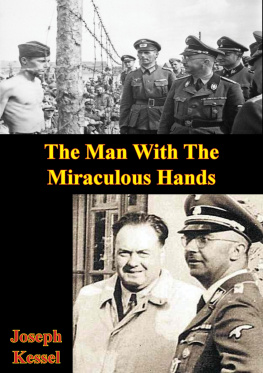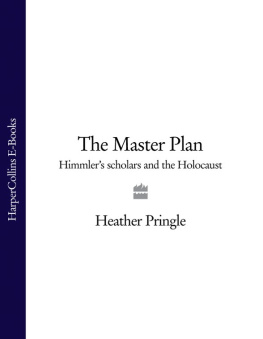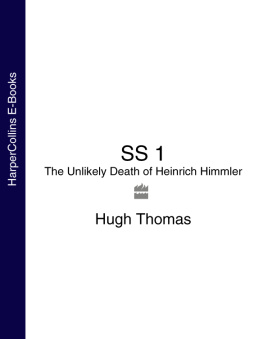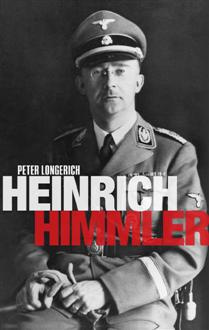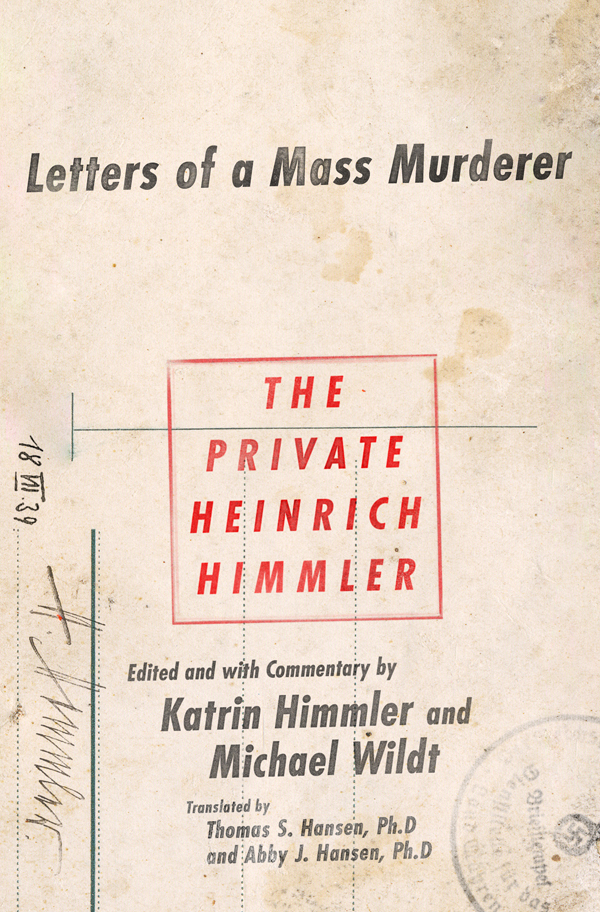Contents
Guide
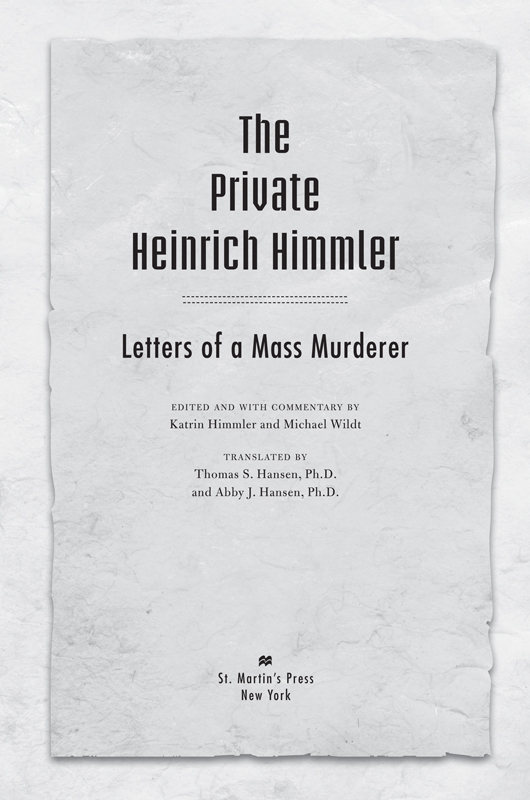
The author and publisher have provided this e-book to you for your personal use only. You may not make this e-book publicly available in any way. Copyright infringement is against the law. If you believe the copy of this e-book you are reading infringes on the authors copyright, please notify the publisher at:
us.macmillanusa.com/piracy.
I
In the spring of 1945, in the immediate aftermath of the war, a U.S. intelligence officer in Gmund am Tegernsee encountered two American GIs who had obviously been helping themselves to souvenirs from Haus Lindenfycht, the private residence of Heinrich Himmler. The officer was a historian and quickly recognized what the two men were carrying. When he tried to buy their spoils, one of the two agreed. The officer was thus able to obtain a bundle of papers containing private documents of the Himmler family. Manuscripts of the Tagebcher [Journals] of the young Heinrich Himmler from the years 191422 were among these papers. The other GI moved on, unwilling to sell his trophies.
The officer sent home the diaries and other documents he had purchased, and paid no further attention to them until 1957, when a discussion with a friend of his, the German-Jewish historian Werner Tom Angress, reminded him of them. He then produced them for historical inspection. Working with a young colleague, Bradley F. Smith, Angress transcribed the manuscripts. Both men reported on the discovery in an essay in The Journal of Modern History (1959).
Other versions of this story exist, but must ultimately remain unsubstantiated because neither of the GIs could ever be positively identified. Angress later presented the diaries, along with the other documents, to the Hoover Institution on War, Revolution, and Peace at Stanford University, where they were made available to the public. This Himmler Collection, which contained the letters of Marga Himmler to her husband, has been a treasure trove for primary historical research for years. After protracted negotiations, the Bundesarchiv (Federal Archives) in Koblenz purchased the originals from the Hoover Institution in the mid-1990s. They are now catalogued as the Nachlass Himmler (Himmler Papers).
A further collection of private documents from Heinrich Himmlers family surfaced in Israel in the early 1980s. These apparently represent the souvenirs that the second GI kept for himself. This material, on microfilm rolls, comprises around two hundred letters written by Heinrich Himmler to his wife in the years 192745. The rolls also contain the microfilms of Margas Tagebcher from 1937 to 1945, the originals of which are now in the collection of the United States Holocaust Memorial Museum in Washington, DC. In addition, the collection in Israel contains the originals of Marga Himmlers NSDAP - Parteibuch [ Party membership book ]; her Jugendtagebuch [ Childhood Diary ] from 1909 to 1916; a Kindheitstagebuch [ Childhood Journal ] about her daughter, Gudrun; the daughters Poesiealbum [ Friendship Album ] and Mdchentagebuch [ Girlhood Album ] from 1941 to April 1945. The collection also contains Margas notebooks with entries about household expenses, Christmas presents, recipes, official documents, and official Hitler Youth certificates for their foster son, Gerhard von der Ah. In addition, there are numerous personal photographs, some of them loose, some mounted in an album.
It is unclear how these materials reached Israel. Several stories survive. In the version dating from the end of the 1960s, the man who owned them for years, a Holocaust survivor, claimed to have bought them at a flea market in Belgium. In a different version, he claimed to have purchased them in Mexico from the former secretary of Himmlers confidant Karl Wolff, and kept them in his private possession for years. An Israeli filmmaker supposedly had a plan to use them in a documentary about Heinrich Himmler, but he died before his project could come to fruition. At times there seem to have been negotiations about selling the documents to the Bundesarchiv in Koblenz. To that end, in 198283, the Bundesarchiv undertook a comprehensive expert examination, including an inspection of the materials, in order to authenticate the documents. The result of this research was the verdict that the documents were unquestionably genuine. Although the originals of Himmlers letters are not available, a comparison of the handwriting and the references to dates and content in his [microfilmedTrans.] letters with those of Marga Himmler confirms their authenticity beyond all doubt.
In the meantime, these materials have become the property of the Israeli documentary filmmaker Vanessa Lapa. Her film Der Anstndige [ The Decent One , Berlinale 2014] presents these documents, which had never before been seen by the public.
Taken together, these collections of source materials comprise a dense corpus of Heinrich Himmlers private documents, the like of which does not exist for any other member of the National Socialist Party (NSDAP) leadership. It is well known that Hitler left neither journals nor private records behind; and Hermann Gring, the highest-ranking National Socialist to sit in the dock in Nuremberg in 194546, left only what is contained in the official written documentation of the Third Reich. Joseph Goebbels wrote a megalomaniacal diary, many thousands of pages long; its function was primarily to document his political role as a National Socialist leader, and he conceived of it as the basis for later publications. But when it comes to intimate details of private life, Heinrich Himmler is the best documented among the highest-ranking NS perpetrators.
Himmlers letters to his wife, Margapublished here for the first time in English, along with her responsescombine to constitute a comprehensive correspondence from their first encounter in 1927 to the end of the war in 1945. The early letters at first seem extremely trite; nothing suggests that the Heinrich Himmler of 1927 would later develop into a mass murderer. Two rather unpretentious people, one a party functionary of the NSDAP and the other a divorced nurse, meet at the end of the 1920s and declare their love for each other in numerous letters. They marry, establish a self-sufficient business [poultry farmingTrans.] in the country, have a children and later take in a foster child. During the following years, while the husband is mostly traveling on official business, the wife stays at home, cares for the children and the house, and looks after the business of the farm. Over time the letters become more earnest: the husbands career is prospering; the couple correspond about daily worries; they telephone each other almost every day, even after the husband has had a mistress for a long time and conceived children with her. The war appears only sketchily in these letters: she writes of nights during the bombardments of Berlin; he writes about the lot of work he has to do on the Eastern Front. Once it becomes clear to him that the war is lost, the correspondence ends with a farewell letter from him.
As prosaic as this description may sound, further inspection reveals how clearly this daily correspondence between Heinrich and Marga Himmler shows their perceptions, assumptions, and worldviews. The discrepancy between Himmlers almost completely concealed murderous daily routine and the private idyll evoked in the letters decreases to the same degree that violence and lack of empathy in everyday life become noticeable in the petty routines of the Himmlers.



